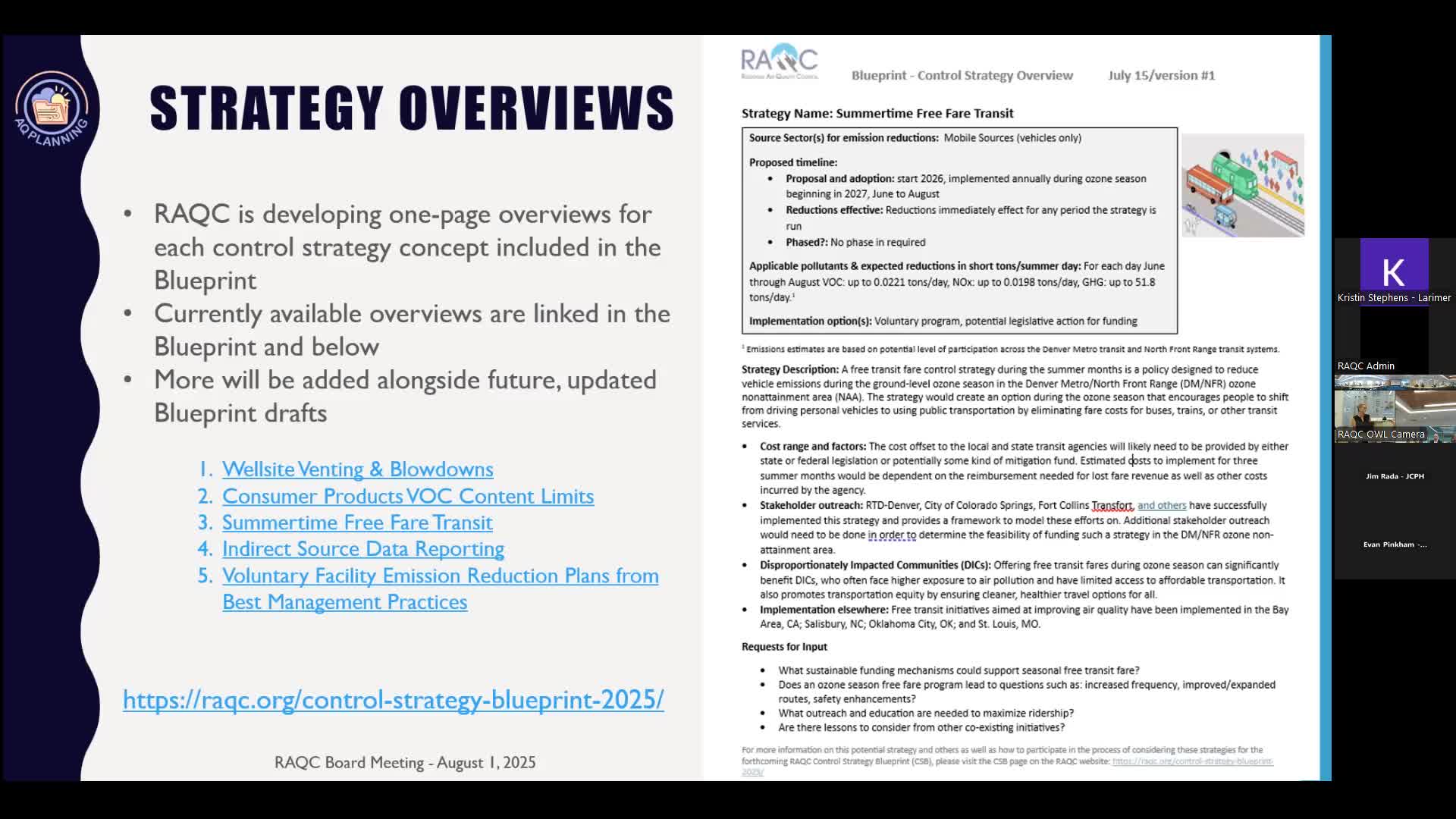RACC Board Reviews Blueprint for Indirect Emissions Reductions Ahead of October Vote
August 01, 2025 | Regional Air Quality Council, Governor's Boards and Commissions, Organizations, Executive, Colorado
This article was created by AI summarizing key points discussed. AI makes mistakes, so for full details and context, please refer to the video of the full meeting. Please report any errors so we can fix them. Report an error »

In a recent meeting of the Regional Air Quality Council (RAQC) held on August 1, 2025, board members engaged in a robust discussion about the development of a new blueprint aimed at reducing indirect source emissions. This initiative is crucial as the state prepares to meet upcoming regulatory requirements, specifically the State Implementation Plan (SIP) deadlines.
The board emphasized the importance of early stakeholder engagement in shaping effective control strategies. Members expressed a need for clear communication regarding the blueprint's purpose and the timeline for decision-making. There was a consensus that many stakeholders may not fully understand the current stage of the process, which could hinder participation. Board members highlighted the necessity of crafting messages that resonate with industry stakeholders, encouraging them to contribute to the discussions.
A significant point raised was the need for transparency about the resources and commitments from state agencies involved in implementing these strategies. Concerns were voiced about the potential challenges in securing funding and the capacity of agencies to execute the proposed plans. Board members stressed that without a clear understanding of these factors, adopting new regulations could set the initiatives up for failure.
The conversation also touched on the importance of not only informing stakeholders but also motivating them to engage actively. Members suggested that understanding the interests and concerns of industry representatives could enhance participation and lead to more productive discussions.
As the board prepares for a critical endorsement of the blueprint in October, they plan to refine their strategies and ensure that all stakeholders are adequately informed and involved in the process. The next meeting will include a draft of the blueprint for review, marking a significant step forward in the council's efforts to improve air quality in Colorado.
This meeting underscored the RAQC's commitment to a collaborative approach in addressing air quality challenges, aiming for a comprehensive plan that balances regulatory needs with practical implementation strategies.
The board emphasized the importance of early stakeholder engagement in shaping effective control strategies. Members expressed a need for clear communication regarding the blueprint's purpose and the timeline for decision-making. There was a consensus that many stakeholders may not fully understand the current stage of the process, which could hinder participation. Board members highlighted the necessity of crafting messages that resonate with industry stakeholders, encouraging them to contribute to the discussions.
A significant point raised was the need for transparency about the resources and commitments from state agencies involved in implementing these strategies. Concerns were voiced about the potential challenges in securing funding and the capacity of agencies to execute the proposed plans. Board members stressed that without a clear understanding of these factors, adopting new regulations could set the initiatives up for failure.
The conversation also touched on the importance of not only informing stakeholders but also motivating them to engage actively. Members suggested that understanding the interests and concerns of industry representatives could enhance participation and lead to more productive discussions.
As the board prepares for a critical endorsement of the blueprint in October, they plan to refine their strategies and ensure that all stakeholders are adequately informed and involved in the process. The next meeting will include a draft of the blueprint for review, marking a significant step forward in the council's efforts to improve air quality in Colorado.
This meeting underscored the RAQC's commitment to a collaborative approach in addressing air quality challenges, aiming for a comprehensive plan that balances regulatory needs with practical implementation strategies.
View full meeting
This article is based on a recent meeting—watch the full video and explore the complete transcript for deeper insights into the discussion.
View full meeting
